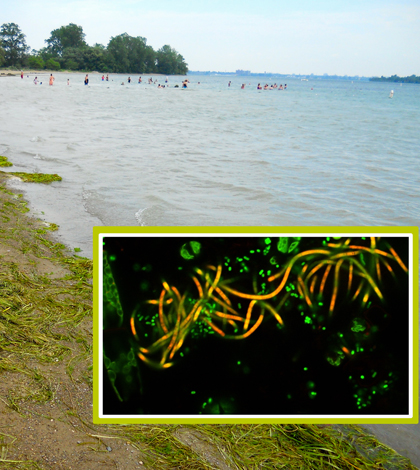Great Lakes green algae protects harmful bacteria

Strands of green algae were found protecting salmonella (green dots) from UV rays (Credit: University at Buffalo)
Researchers at the University at Buffalo have found that green algae in the Great Lakes provides protection to bacteria like E. coli and salmonella, according to a release from the university. The algae appears to shield the bacteria from ultraviolet rays that would otherwise kill them off.
Algae blooms can act as barriers, researchers say, between the UV radiation and the bacteria, allowing them to grow mostly uninhibited. This revelation proves that algae are more than just nuisances to beachgoers — they can also harbor dangerous bacteria.
Scientists sampled water from the Niagara River and beaches at Beaver Island State Park to make the discovery. With protection from algae, they say strains of E. coli lived 10 hours longer than without.
Image: Strands of green algae were found protecting salmonella (green dots) from UV rays (Credit: University at Buffalo)





0 comments